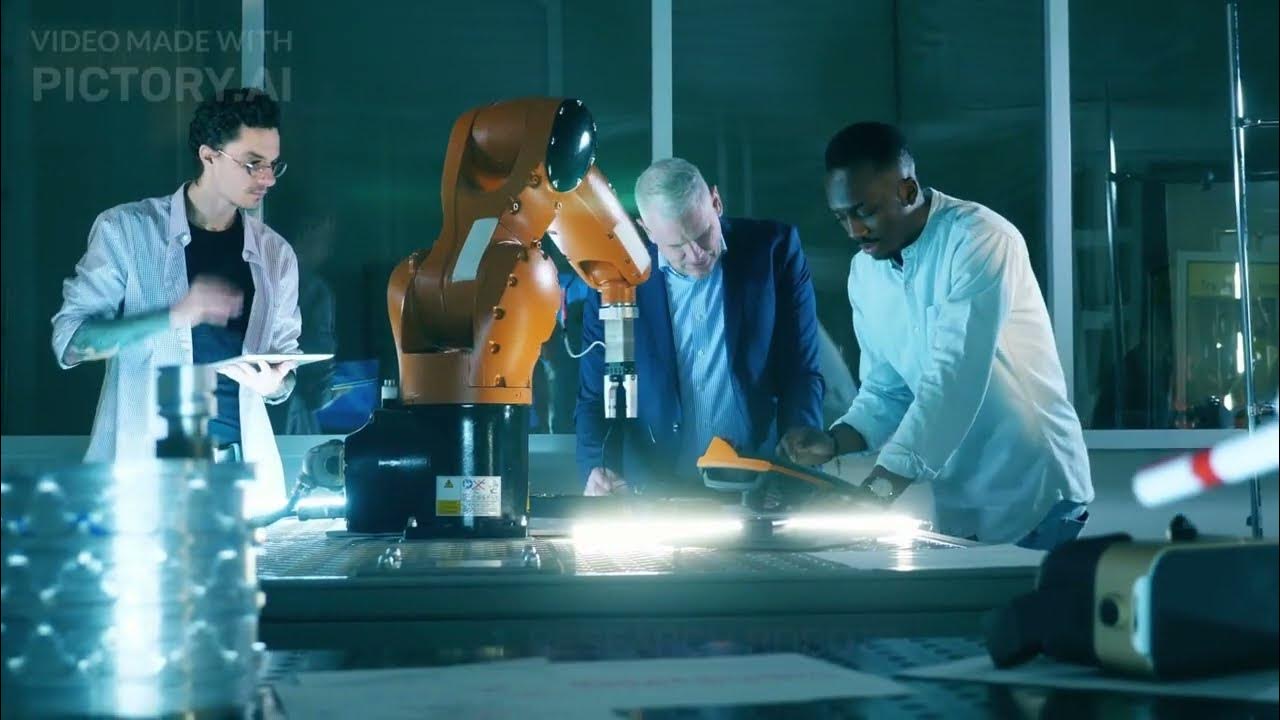How Boston Dynamics Is Building Its Robot Empire
Summary
TLDRBoston Dynamics, a leader in robotics, is pushing the boundaries of technology with robots like Spot and Stretch, which are designed for industries like logistics, inspection, and healthcare. While its journey from a research-focused entity to a commercial powerhouse has faced challenges due to high production costs, the company continues to innovate, exploring future applications in construction, manufacturing, and entertainment. With the support of Hyundai, Boston Dynamics is poised to make robots an integral part of daily life, enhancing productivity and safety while building meaningful human-robot relationships.
Takeaways
- 😀 Boston Dynamics' robots, such as Spot and Stretch, have captivated public imagination due to their advanced mobility, vision, and manipulation abilities.
- 😀 Despite public fascination, Boston Dynamics aims to target paying customers by expanding its commercial offerings, focusing on industries like robotics inspection and warehouse management.
- 😀 The company's early research was funded by the U.S. military, contributing to the development of robots like Big Dog, LS3, and Cheetah for military use.
- 😀 After being acquired by Google in 2013, Boston Dynamics faced challenges, including stalling progress in robotics due to leadership changes and cost-cutting initiatives.
- 😀 In 2017, SoftBank bought Boston Dynamics for $165 million and aimed to inject a commercial DNA into the company, with Spot becoming its first commercial product.
- 😀 Hyundai acquired an 80% stake in Boston Dynamics in 2020 for $880 million, with plans to dominate the growing robotics market.
- 😀 The robotics market for mobile robots in warehouses and manufacturing is expected to grow significantly, reaching nearly $65 billion by 2030.
- 😀 Stretch, Boston Dynamics' box-moving robot, is designed to improve efficiency in warehouses, capable of handling truck unloading, order building, and cleaning up any mess it creates.
- 😀 Spot has already seen success in industries like construction, oil, and healthcare, with its mobility and ability to carry specialized sensors for inspections.
- 😀 Boston Dynamics is competing with companies like Amazon and other robotics firms in the warehouse and inspection robot markets, but it holds an edge due to its advanced technology in mobility and complex environments.
- 😀 While Boston Dynamics continues to face challenges, including high production costs and competition, it is optimistic about its trajectory toward profitability, supported by investment from SoftBank and Hyundai.
Q & A
What is the primary focus of Boston Dynamics today?
-Boston Dynamics is focused on transitioning from research and development to commercializing their robotics products, particularly with robots like Spot, Stretch, and Atlas.
How has Boston Dynamics evolved since its founding in 1992?
-Since its founding in 1992, Boston Dynamics has shifted from a research-oriented company funded by the military to one aiming to commercialize its robotic technology, including multiple ownership changes, from Google to SoftBank and eventually Hyundai.
What are some of the robots that Boston Dynamics has created, and what are their functions?
-Boston Dynamics has created several robots, including Spot (a quadruped used for inspection and surveillance), Stretch (a robot designed for warehouse logistics), and Atlas (an agile humanoid robot, primarily used for research).
Why is Boston Dynamics struggling to achieve profitability?
-Boston Dynamics struggles with profitability due to the high cost of producing robots and the challenges associated with scaling production. Their robots, although advanced, are expensive compared to alternatives in the market.
How does Boston Dynamics plan to make its robots more affordable?
-Boston Dynamics aims to reduce the costs of production through scaling up their operations, achieving economies of scale, and making robots more affordable to a broader range of customers.
What industries is Boston Dynamics looking to expand into?
-Boston Dynamics is considering expanding its robots into various industries, including construction, manufacturing, and entertainment, in addition to their current applications in inspection and warehouse logistics.
What is the status of the Atlas robot?
-The Atlas robot, despite being an impressive humanoid robot, is likely to remain within the lab for research purposes and isn't expected to be commercialized in the near future.
How has the market reception been for Spot and Stretch?
-Spot has received positive reception, exceeding initial sales expectations, while Stretch, designed for logistics, is also viewed as a step toward automation in industries like warehouses.
What is Boston Dynamics' approach to research and development as they commercialize their robots?
-Boston Dynamics emphasizes the importance of continuing its R&D efforts to stay at the cutting edge of robotics, focusing on areas like vision and manipulation for next-generation robots.
What is the long-term vision for robotics, according to Boston Dynamics?
-Boston Dynamics envisions a future where robots are a regular part of daily life, enhancing productivity, safety, and enriching human lives, rather than being seen as exceptions.
Outlines

This section is available to paid users only. Please upgrade to access this part.
Upgrade NowMindmap

This section is available to paid users only. Please upgrade to access this part.
Upgrade NowKeywords

This section is available to paid users only. Please upgrade to access this part.
Upgrade NowHighlights

This section is available to paid users only. Please upgrade to access this part.
Upgrade NowTranscripts

This section is available to paid users only. Please upgrade to access this part.
Upgrade NowBrowse More Related Video

10 Amazing Robots That Really Exist

Primeiro hospital de IA do mundo na China: Médicos Robôs que 'podem tratar 3.000 pacientes por dia

9 Most Advanced AI Robots - Humanoid & Industrial Robots

Types of Robot and their uses

Making Chat (ro)Bots

Inside the world's first humanoid factory, where robots could eventually build themselves
5.0 / 5 (0 votes)